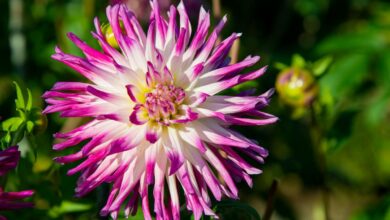How Yellow Perennial Flowers Will Brighten Your Garden ?

Illuminate your lawn with the timeless beauty of yellow perennial flowers. Explore a vibrant array of solar-kissed blooms that promise to deliver warm temperature and joy season after season. Discover the ideal burst of light on your garden oasis with our beautiful selection of yellow perennials.
Yellow is one of the colours that has the most effect in the garden. Brightening landscapes and matching a variety of garden types, from English cottage to xeriscape, is the lively hue. You can see perennial plants with yellow blossoms renew your garden year after year by including them in your landscaping. There is a huge assortment of yellow perennials to choose from. Here are a few of the most striking yellow flowers available to help you focus your search.
What are Perennial flowers?
Plants that survive for more than two years and return year after year are known as perennial blooms. Perennial plants usually die down to the ground every winter and then reappear from their root system in the spring, in contrast to annuals, which finish their life cycle in only one season and require annual replanting.
Year after year, perennials may be utilized to bring colour and interest to a garden or landscape since they come in a wide variety of forms, sizes, and colours. Perennial flowers comprise several types such as roses, lilies, peonies, daisies, asters, and numerous more. Because perennials frequently have different flowering phases, you can use them to create a garden that is continuously in bloom throughout the growing season.
The bright yellow of the forsythia and spurge in the springtime offers a cheery contrast to the dull winter colors that had dominated the garden. Coneflowers and coreopsis are followed by summer blossoms, and black-eyed Susans and chrysanthemums give us the harvest hues that last throughout October. Of course, there are also some beautiful yellow annuals, such as marigolds and sunflowers.
To liven up your garden, nevertheless, let’s start with some yellow perennial flowers.
For spring, yellow perennial flowers
For a taste of spring in your yard, add these perennials! These plants are among the first to burst into colour in the garden, so you’ll want to watch them carefully every year.
Spruge
Spurge is a beautiful mounding perennial that blooms in early spring and belongs to the Euphorbia genus. It’s the season to appreciate the vivid golden bracts. I have one indoors, under the window of my living room, and one outside in my front yard, where you can see it from the street. I’ve discovered that “Bonfire” is a sturdy and drought-resistant plant. It grows well in full daylight in my front yard as well as the afternoon shadow it receives in the garden beneath my window.
Forsythia
One of my favourite bushes to bloom in the spring is forsythia. In April, depending on the year, it generally blooms. I enjoy bringing in branches that I’ve clipped from my backyard, and when they finally blossom outside, they really pop. As the blossoms for next year form on this year’s branches, make sure you cut it as soon as the blooms have fallen off. It is little more than a lovely green, leafy shrub during the summer. Moreover, the deer don’t bother with the forsythia when they come into my yard in the winter to munch on my cedars.
Aconite in winter
This cheery, low-growing tuberous perennial, a member of the buttercup family, has some of the first springtime blooms. Usually, until they show up, I forget where they are. If planting, use them as a groundcover behind taller perennials. To protect from winter conditions, plant tubers in the fall, spacing them approximately six inches apart and digging them down at least five inches.
Perennial yellow flowers for a summer garden
For the summer garden, there are a ton of possibilities. These plants, some of which are native to North America, look great added to summer vases.
Coreopsis
This native plant, often called tickseed, is another one that can draw butterflies and bees to your yard. Drought tolerance is exhibited by coreopsis, which benefits from deadheading to prolong its bloom period. There are many interesting types as well as yearly options available.
Cone flowers
Coneflowers are usually associated with the colour pink, but there are also some lovely yellow variations. They tolerate dry circumstances during the summer and prefer partial to full sun. In addition to adding visual appeal to the garden during the winter, they serve as a food source for birds. They draw butterflies and bees throughout the summertime.
Shasta daisies
Though the centre of the Shasta daisy is typically yellow, there are also golden variations. They have beautiful, rich foliage that helps them stand out in the landscape, and they provide late-summer blooms. One planted in the garden will spread, so make sure to divide it every two to three years. Additionally, remember to deadhead!
Perennial yellow blooms that bloom all fall long
Astute gardeners ensure that they have blooming plants from spring till the onset of cold. When other plants begin to fade back, these perennial options will add some colour and vitality to the landscape.
Black-eyed Susans
Native to North America, black-eyed Susans are classic summer perennial blooms. You can find them growing in ditches, meadows, and along hiking paths in addition to gardens. Members of the sunflower family, they bloom throughout October and make wonderful cut flowers for summertime bouquets. Both the pollinators and they adore the sun! In winter, give the seed heads to the birds.
The Chrysanthemum
At the end of the season, chrysanthemums are some of the very last flowers to remain in bloom. When fall rolls around, you can usually find them in the garden centre, arranged alongside hay bales and other harvest-themed decorations. And yellow mums stand out as the garden fades. Every year, the mums in my yard return. Even if they were produced in a greenhouse, I will attempt to overwinter any new mums I purchase from an autumn display in my yard. Some have returned throughout the years, while others haven’t.
yearly yellow flowers
My selection had to include a couple of sunny annuals. Similar to their annual cousins, these flowers draw lots of pollinators and can use their cheery color to fill in bare garden spaces.
Marigolds
My raised beds are always stocked with marigolds. Every year, I plant them along the borders because they are attractive to look at, attract pollinators, and are supposedly effective at keeping out numerous pests, including nematodes that live beneath the ground. Gem cultivars can be grown as a Japanese beetle trap crop. It seems that African marigolds planted densely have the ability to eradicate bindweed, so maybe I might apply that aim to the side of my house where bindweed makes me want to relocate.
Nasturtium
Every year, I like cultivating many nasturtium kinds in my raised beds and pots. Among them are some beautiful yellow variants. They cascade over the side of their container, making a pretty spiller. Eating the leaves and blooms makes for enjoyable salad preparation for summertime get-togethers. These are easy to cultivate from seed and are highly favoured by pollinators.
Sunflowers
Since the name of the plant includes the term “sun,” I would be careless if I did not add sunflowers! Sunflowers come in countless kinds, from heritage types that are loaded with pollen for butterflies and bees to pollen-free ones that can be chopped for flower arrangements without creating a mess. Additionally, there are variations for those who want to eat the seeds! Sunflowers make beautiful backdrop plants for vegetable gardens and are relatively easy to cultivate from seed—as long as they don’t shadow out the vegetables you’re planting, that is.
Conclusion
“In the end, yellow perennial flowers do not best upload a burst of coloration to your garden but additionally deliver enduring attraction and energy. With their undying beauty and potential to thrive yr after yr, those blooms are a radiant choice for any lawn enthusiast. Elevate your outside area with the perennial sunshine of yellow plants and experience a lawn that blooms with joy and vibrancy for seasons to come back.”
Get more interesting heart warming information with just one more click. Click Here…




One Comment